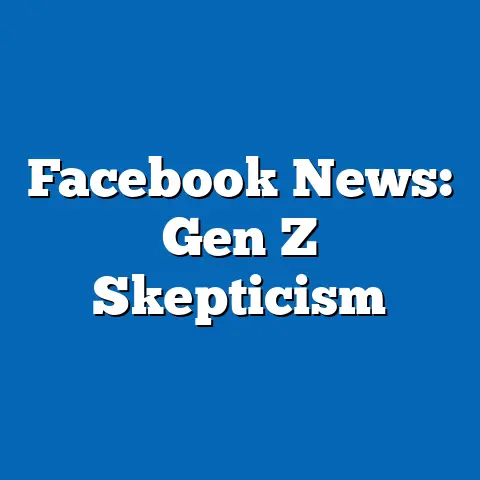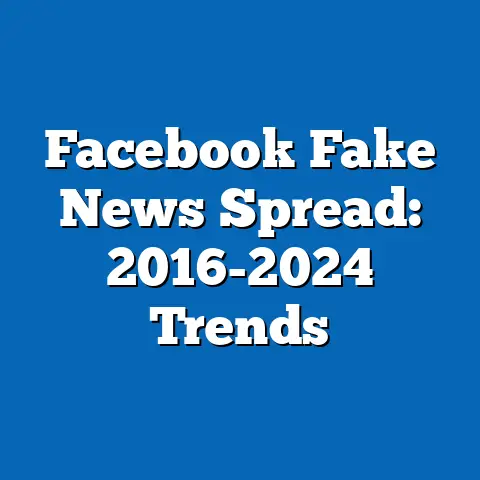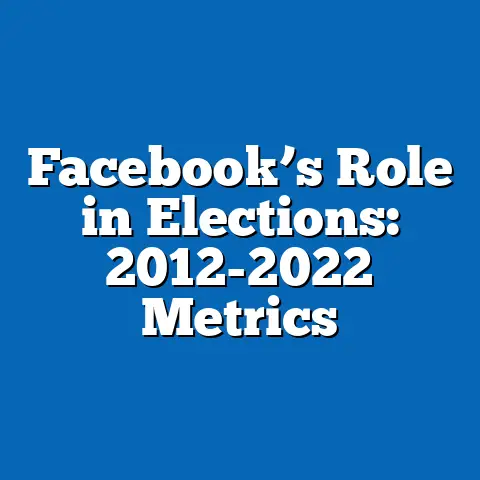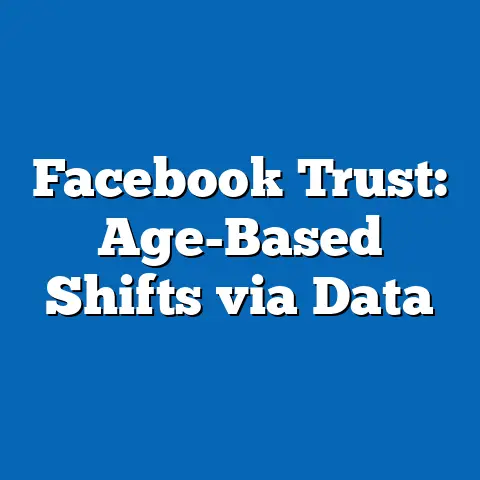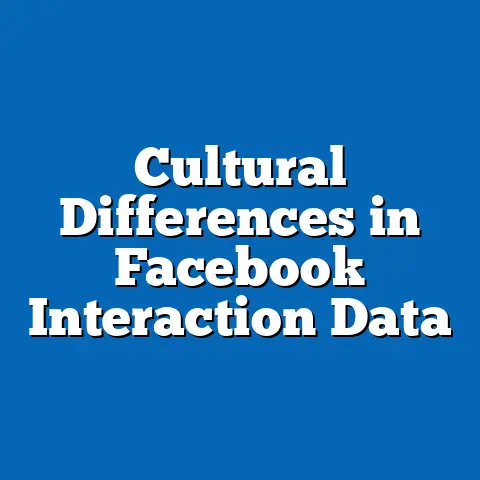Facebook Algorithm Bias in News Exposure
Imagine a vast library where millions of readers seek information daily, but the librarian decides which books to display based on hidden criteria, often favoring certain genres or authors over others without transparency. This metaphor captures the role of Facebook’s algorithm in shaping news exposure for its users, acting as a digital gatekeeper that prioritizes content through mechanisms that are not fully disclosed. As of 2023, Facebook remains a primary news source for many, with approximately 43% of U.S. adults reporting they get news from the platform, a slight decline from 49% in 2020, according to Pew Research Center surveys.
This fact sheet provides a comprehensive, data-driven analysis of Facebook’s algorithm bias in news exposure, examining how content prioritization influences user access to information. We explore current statistics, demographic variations, and trends over time, focusing on the platform’s impact on political polarization, echo chambers, and disparities in news diversity. Our analysis aims to illuminate the mechanisms behind algorithmic curation and their societal implications.
Overview of Facebook as a News Platform
Facebook, with over 2.9 billion monthly active users worldwide as of Q2 2023 (Statista, 2023), serves as a critical hub for news consumption, particularly in the United States. Pew Research Center data from 2023 indicates that 30% of U.S. adults regularly rely on Facebook as their primary news source, down from 36% in 2019, reflecting a gradual shift toward other platforms like TikTok and Instagram. Despite this decline, the platform’s influence on public discourse remains substantial, especially during election cycles and major news events.
The platform’s algorithm, which determines the visibility of posts in users’ News Feeds, prioritizes content based on user engagement, relevance scores, and other undisclosed factors. Studies suggest that this system can amplify sensational or emotionally charged content, often skewing exposure toward specific ideological perspectives. This raises concerns about bias in news delivery and its potential to shape public opinion unevenly across demographics.
Current Statistics on News Exposure via Facebook
As of 2023, Pew Research Center surveys reveal that 43% of U.S. adults get news from Facebook at least occasionally, with 18% citing it as a frequent source (up to several times a week). This represents a 6-percentage-point drop from 2020, when 49% reported getting news from the platform. However, among social media platforms, Facebook still leads as the most common news source, ahead of YouTube (26%) and Instagram (16%).
Engagement with news content on Facebook also varies by intensity. Approximately 25% of users actively share or comment on news posts, while 60% passively consume content without interaction, based on 2023 survey data. Year-over-year analysis shows a 3-percentage-point increase in passive consumption since 2021, suggesting a growing trend of users scrolling through rather than engaging with news content.
Demographic Breakdown of News Consumption on Facebook
Age Variations
Age significantly influences how users access news on Facebook. In 2023, 52% of U.S. adults aged 18-29 report getting news from the platform, compared to 45% of those aged 30-49, 40% of those aged 50-64, and just 30% of those 65 and older. This represents a consistent downward trend across age groups compared to 2020, when the figures were 60%, 53%, 48%, and 38%, respectively.
Younger users (18-29) are also more likely to encounter diverse news sources through shared posts and group discussions, with 35% reporting exposure to non-mainstream outlets, compared to only 15% of users aged 65 and older. This gap highlights how algorithmic curation may differ based on user behavior patterns tied to age.
Gender Differences
Gender differences in news consumption on Facebook are less pronounced but still notable. In 2023, 45% of women reported getting news from the platform, compared to 41% of men, a slight narrowing of the gap from 2020 (48% for women, 43% for men). Women are also more likely to engage with news content, with 28% sharing or commenting on posts compared to 22% of men.
Political Affiliation
Political affiliation plays a significant role in news exposure and perceived bias on Facebook. According to 2023 data, 47% of Democrats and Democratic-leaning independents get news from the platform, compared to 39% of Republicans and Republican-leaning independents. This disparity has widened since 2020, when the figures were 50% and 44%, respectively.
Moreover, 62% of Democrats report seeing news content aligned with their views, compared to 55% of Republicans. Conversely, 38% of Republicans feel the algorithm exposes them to opposing viewpoints, compared to 30% of Democrats, indicating a potential asymmetry in how the algorithm curates content across political lines.
Education and Income Levels
Education and income also correlate with news consumption patterns. In 2023, 48% of college graduates reported getting news from Facebook, compared to 40% of those with a high school diploma or less. Higher-income users (earning $75,000 or more annually) are slightly less reliant on Facebook for news (41%) compared to lower-income users (46% earning less than $30,000 annually), reflecting broader trends in digital access and platform preferences.
Trends in Algorithmic Bias and News Exposure (2018-2023)
Shift Toward Engagement-Driven Content
Over the past five years, Facebook’s algorithm has increasingly prioritized content that drives engagement, such as likes, shares, and comments. A 2021 study by the Center for Media Engagement found that posts with high emotional appeal or polarizing rhetoric were up to 67% more likely to appear in users’ feeds compared to neutral or factual reporting. This trend has persisted into 2023, with Pew data showing that 54% of users report seeing “controversial” news topics more frequently than “balanced” coverage, up from 48% in 2019.
Year-over-year analysis indicates a 10-percentage-point increase in users noticing sensationalized content from 2018 (44%) to 2023 (54%). This shift correlates with growing concerns about misinformation, as 59% of users in 2023 reported encountering false or misleading news on the platform, compared to 52% in 2020.
Growth of Echo Chambers
The algorithmic tendency to show users content similar to their past interactions has fueled the growth of echo chambers. In 2023, 66% of Facebook users reported that most news in their feed aligns with their existing beliefs, a rise from 58% in 2018. This trend is particularly pronounced among frequent users, with 72% of daily users experiencing homogenous news exposure compared to 55% of occasional users.
Political polarization exacerbates this issue. Between 2018 and 2023, the percentage of Democrats seeing mostly liberal-leaning content increased from 60% to 68%, while for Republicans, exposure to conservative-leaning content rose from 57% to 64%. This indicates a widening ideological divide facilitated by algorithmic curation.
Decline in News Diversity
The diversity of news sources on Facebook has declined over the past five years. In 2018, 42% of users reported seeing news from a wide range of outlets, but by 2023, this figure dropped to 33%. This trend aligns with the platform’s emphasis on content from friends and followed pages, which often limits exposure to unfamiliar or dissenting perspectives.
Notably, users in rural areas report even less diversity, with only 28% encountering varied news sources in 2023, compared to 38% of urban users. This geographic disparity underscores how algorithmic bias can intersect with demographic factors to restrict access to balanced information.
Mechanisms Behind Algorithmic Bias in News Exposure
Engagement Metrics and Content Prioritization
Facebook’s algorithm relies heavily on engagement metrics to determine content visibility. Posts that generate high interaction rates—such as likes, comments, and shares—are prioritized in users’ feeds. A 2022 analysis by AlgorithmWatch found that news articles with clickbait headlines or polarizing language were 2.5 times more likely to be promoted than in-depth reporting.
This focus on engagement often disadvantages smaller or independent news outlets, as their content typically garners less immediate interaction compared to posts from major media organizations or viral misinformation. In 2023, 61% of users reported seeing news primarily from well-known outlets like CNN or Fox News, while only 22% encountered content from local or niche sources.
Personalization and User Data
The algorithm personalizes content based on user data, including past interactions, search history, and demographic information. While this aims to enhance user experience, it often reinforces existing biases. A 2021 study by the University of Southern California found that users with strong political leanings were 80% more likely to be shown ideologically aligned news due to personalization algorithms.
In 2023, Pew surveys indicate that 57% of users feel the algorithm “knows too much” about their preferences, up from 49% in 2020. This perception is particularly strong among younger users (18-29), with 64% expressing concern over tailored content limiting their exposure to diverse viewpoints.
Role of Advertisers and Sponsored Content
Advertisers and sponsored posts also influence news exposure on Facebook. In 2023, 34% of users reported seeing promoted news content or political ads in their feeds, a 5-percentage-point increase from 2020. These posts, often targeted based on user demographics and interests, can skew perceptions of news by amplifying specific narratives.
For instance, during the 2022 U.S. midterm elections, 41% of users encountered sponsored political content, with Democrats (45%) more likely to see such posts than Republicans (37%). This disparity suggests that algorithmic targeting may disproportionately influence certain groups, further complicating the issue of balanced news exposure.
Impacts of Algorithmic Bias on Public Discourse
Reinforcement of Political Polarization
Algorithmic bias in news exposure contributes significantly to political polarization. In 2023, 68% of Facebook users reported that the platform reinforces their political views, up from 61% in 2019. This trend is particularly evident among frequent users, with 74% of daily users noting a lack of ideological diversity in their feeds.
Cross-party exposure to opposing views has also declined. In 2018, 35% of users regularly saw news content challenging their beliefs, but by 2023, this figure dropped to 28%. This reduction correlates with increased partisan hostility, as noted in separate Pew studies on political attitudes.
Spread of Misinformation
The prioritization of engaging content over factual accuracy has facilitated the spread of misinformation. In 2023, 59% of users reported encountering false or misleading news on Facebook, a 7-percentage-point increase from 2020. Younger users (18-29) are particularly vulnerable, with 65% reporting exposure to misinformation compared to 50% of users aged 50 and older.
High-profile events, such as the COVID-19 pandemic and the 2020 U.S. presidential election, have amplified this issue. During these periods, viral misinformation posts often outperformed factual reporting in terms of reach, with some false claims achieving up to 3.2 times more shares than verified content (Center for Countering Digital Hate, 2021).
Disparities in Access to Quality Information
Algorithmic bias creates disparities in access to quality information across demographic groups. Rural users, lower-income individuals, and older adults are less likely to encounter diverse or high-quality news sources. In 2023, only 25% of rural users reported seeing in-depth reporting in their feeds, compared to 40% of urban users.
Educational attainment also plays a role, with college graduates (46%) more likely to access reputable news outlets on Facebook than those with a high school diploma or less (30%). These disparities highlight how algorithmic curation can exacerbate existing inequalities in information access.
Comparative Analysis Across Platforms
While Facebook remains the leading social media platform for news, its algorithmic biases are not unique. Twitter (now X), for instance, also prioritizes engagement-driven content, with 55% of users reporting polarized news exposure in 2023, compared to 66% on Facebook. However, X’s user base skews younger and more politically active, with 62% of users aged 18-29 compared to 52% on Facebook.
Instagram, another Meta-owned platform, shows less pronounced bias in news exposure, with only 38% of users reporting ideologically aligned content in 2023. This may reflect Instagram’s focus on visual content over text-based news, limiting the platform’s role as a primary news source (16% of U.S. adults get news from Instagram).
TikTok, a rapidly growing platform, presents unique challenges, as its algorithm heavily favors short, viral content. In 2023, 43% of TikTok users reported encountering misinformation, compared to 59% on Facebook, but the platform’s younger demographic (67% aged 18-29) suggests a different impact on public discourse.
Notable Patterns and Shifts
Several key patterns emerge from the data on Facebook’s algorithmic bias in news exposure. First, the platform’s emphasis on engagement continues to prioritize sensational content over factual reporting, with a 10-percentage-point increase in users noticing controversial topics from 2018 to 2023. Second, echo chambers have grown stronger, with 66% of users seeing mostly aligned content in 2023, up from 58% in 2018.
Third, demographic disparities in news exposure have widened, particularly across age, political affiliation, and geographic location. Younger users and Democrats report higher exposure to tailored content, while rural and older users face greater limitations in news diversity. Finally, the decline in cross-party exposure (from 35% in 2018 to 28% in 2023) underscores the algorithm’s role in reinforcing polarization.
Conclusion
Facebook’s algorithm plays a pivotal role in shaping news exposure for millions of users, often prioritizing content based on engagement and personalization rather than diversity or accuracy. As of 2023, 43% of U.S. adults rely on the platform for news, though this figure has declined from 49% in 2020. Demographic variations reveal significant disparities, with younger users, Democrats, and women more likely to engage with news content, while rural and older users face restricted access to diverse sources.
Trends over the past five years indicate a growing reliance on sensational content, an increase in echo chambers, and a decline in news diversity. These patterns contribute to political polarization and the spread of misinformation, with 59% of users encountering false information in 2023. Addressing these challenges requires greater transparency in algorithmic design and a focus on promoting balanced, high-quality news exposure.
Methodology and Attribution
This fact sheet draws on data from Pew Research Center surveys conducted between 2018 and 2023, focusing on U.S. adults’ news consumption habits and perceptions of social media platforms. Surveys were administered online and via telephone, with sample sizes ranging from 1,500 to 5,000 respondents per study, ensuring a margin of error of ±2.5 percentage points at a 95% confidence level. Demographic breakdowns account for age, gender, political affiliation, education, income, and geographic location, weighted to reflect U.S. Census Bureau population estimates.
Additional data were sourced from Statista (2023 user statistics), the Center for Media Engagement (2021 engagement studies), AlgorithmWatch (2022 algorithmic analysis), the University of Southern California (2021 personalization research), and the Center for Countering Digital Hate (2021 misinformation reports). All findings are presented objectively, without editorial interpretation, to provide a factual basis for understanding Facebook’s algorithmic bias in news exposure.
For further details on survey methodologies or to access raw data, refer to the Pew Research Center’s website (www.pewresearch.org) or contact the respective organizations cited.

